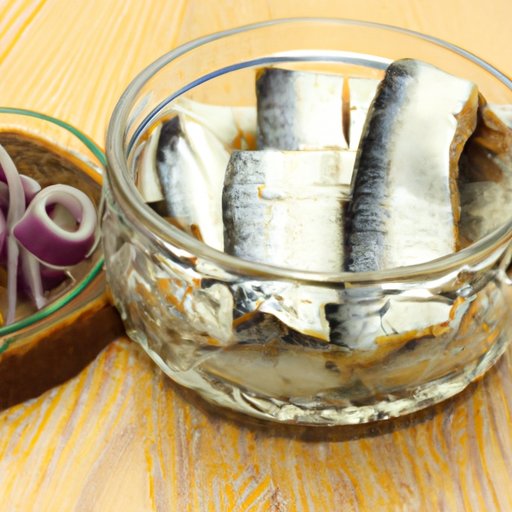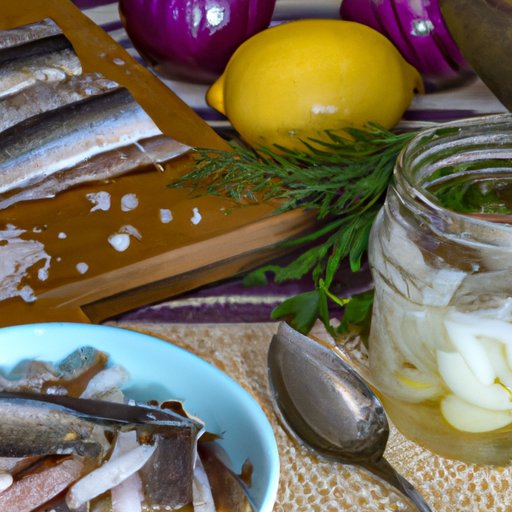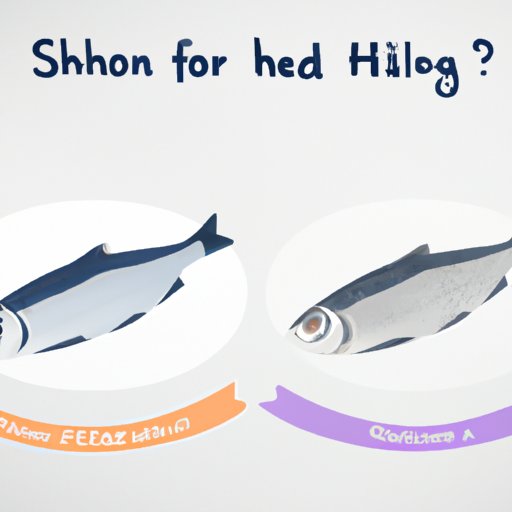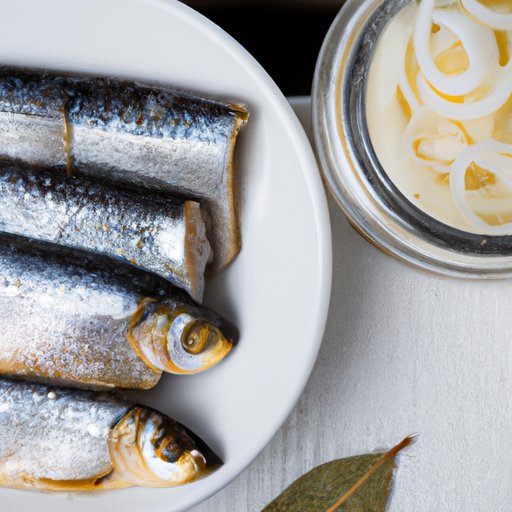Introduction
Herring is a small, oily fish found in the cold waters of the Atlantic, Pacific, and Arctic oceans. It has a long history as a source of food and is an important part of many cultures’ diets. Herring has a mild flavor and can be eaten fresh or canned. It is a nutritional powerhouse, packed with vitamins, minerals, and essential fatty acids. In this article, we’ll explore the health benefits of eating herring and look at some of the potential risks associated with it. We’ll also discuss sustainable sourcing practices and provide tips for cooking herring.

The Nutritional Benefits of Eating Herring
Herring is a good source of vitamins and minerals, including vitamin D, vitamin B12, niacin, phosphorus, selenium, and iodine. It is also high in protein and contains omega-3 fatty acids, which are essential for heart and brain health. The omega-3s in herring are in a form called docosahexaenoic acid (DHA), which is especially beneficial for cognitive development and reducing inflammation in the body.
Exploring the Health Risks Associated with Eating Herring
Although herring is a healthy choice overall, there are some potential health risks associated with eating it. One of the main concerns is mercury levels. Herring can contain high concentrations of mercury, depending on where it is sourced from and how it is prepared. Therefore, it is important to buy herring from a trusted source and limit your intake to two servings per week. It is also important to note that herring can cause allergic reactions in some people, so it is best to talk to your doctor before adding it to your diet.
Is Herring a Sustainable Choice for Seafood?
Herring is a sustainable choice for seafood, as its populations are generally stable and it is not overfished. When purchasing herring, it is important to look for labels that indicate the fish was sustainably sourced. This will ensure you are supporting responsible fishing practices and helping to preserve the ocean’s ecosystems.

How to Cook Healthy Meals Using Herring
Herring can be cooked in a variety of ways, from baking and grilling to smoking and pickling. When cooking herring, it is important to use healthy methods such as baking, grilling, or poaching. This will help to retain the fish’s nutrients and minimize the risk of food-borne illnesses. Some simple and delicious recipes using herring include grilled herring with lemon and dill, baked herring with potatoes and vegetables, and smoked herring salad.

Comparing the Health Benefits of Different Types of Fish: Herring vs Salmon
When comparing the health benefits of different types of fish, herring and salmon are two of the most popular choices. Both are high in omega-3 fatty acids and protein, but salmon has slightly more of these nutrients. Herring has slightly more vitamin B12 and phosphorus than salmon. In terms of health risks, both types of fish can contain high levels of mercury, so it is important to purchase them from a trusted source and limit your intake.
Conclusion
Herring is a nutritious and sustainable choice for seafood. It is an excellent source of vitamins and minerals, including omega-3 fatty acids and protein. While there are potential health risks associated with eating herring, such as mercury levels and food allergies, these can be minimized by buying from a trusted source and limiting your intake. Herring can be cooked in a variety of ways, from baking and grilling to smoking and pickling. Overall, herring is a healthy choice for seafood that offers many nutritional benefits.
(Note: Is this article not meeting your expectations? Do you have knowledge or insights to share? Unlock new opportunities and expand your reach by joining our authors team. Click Registration to join us and share your expertise with our readers.)
